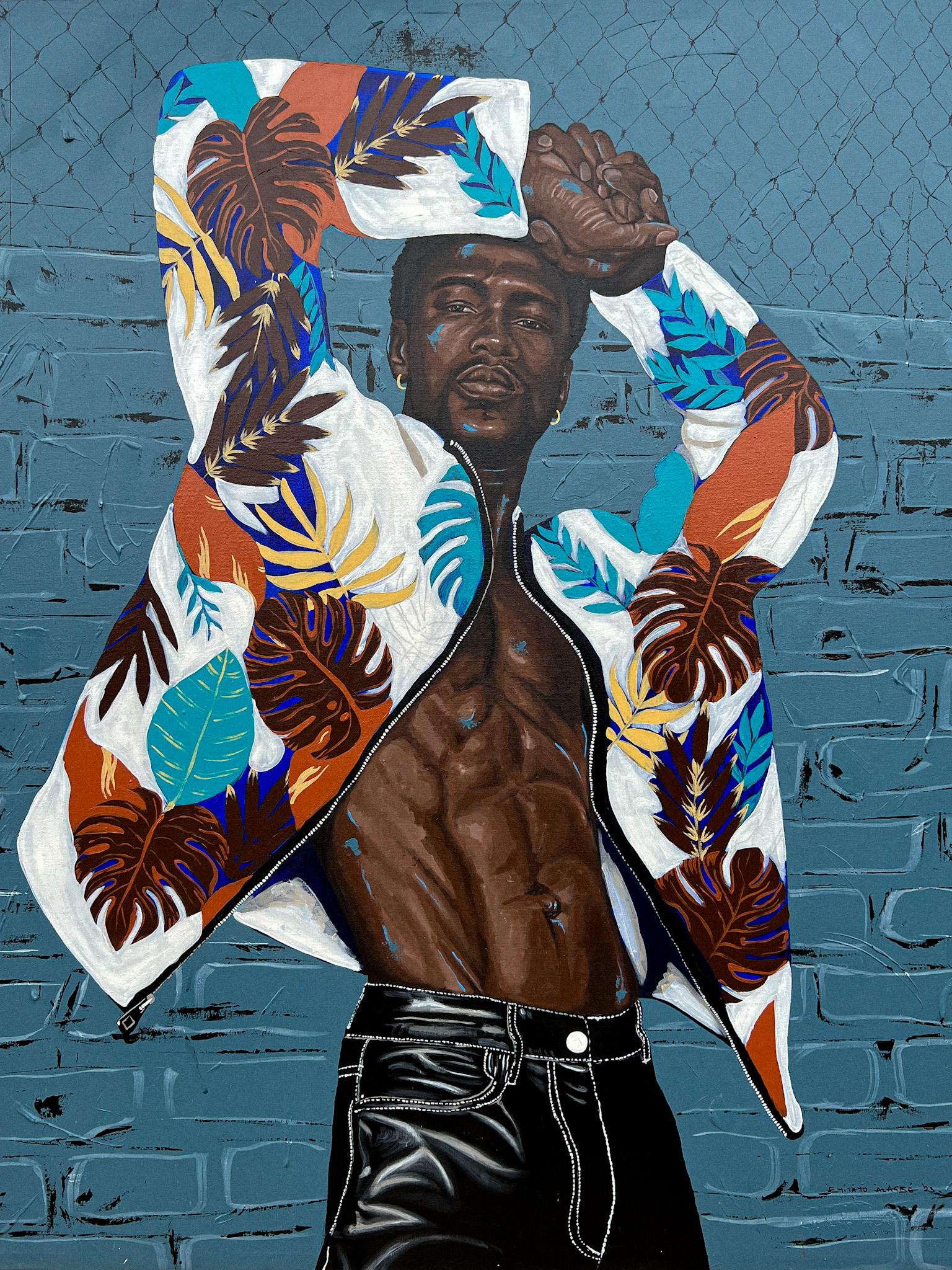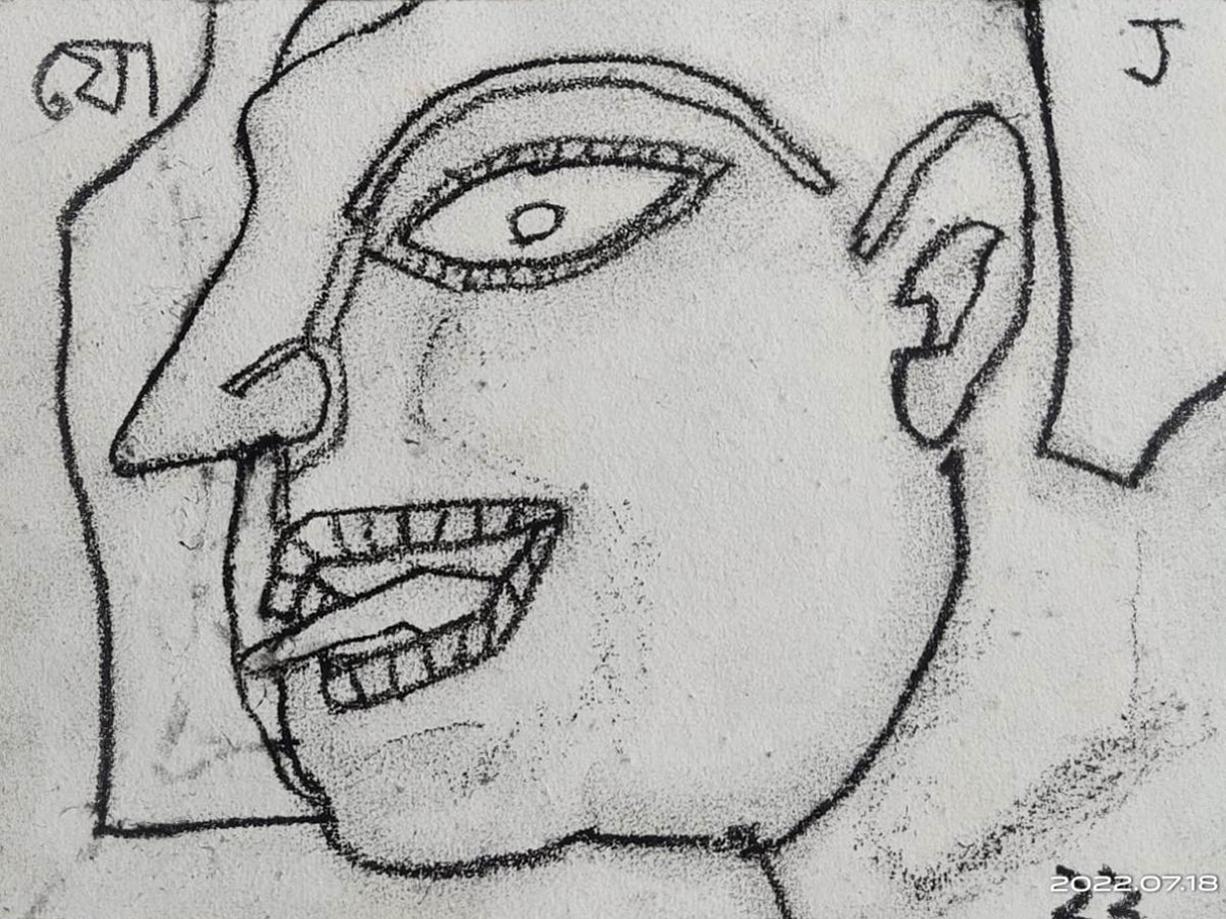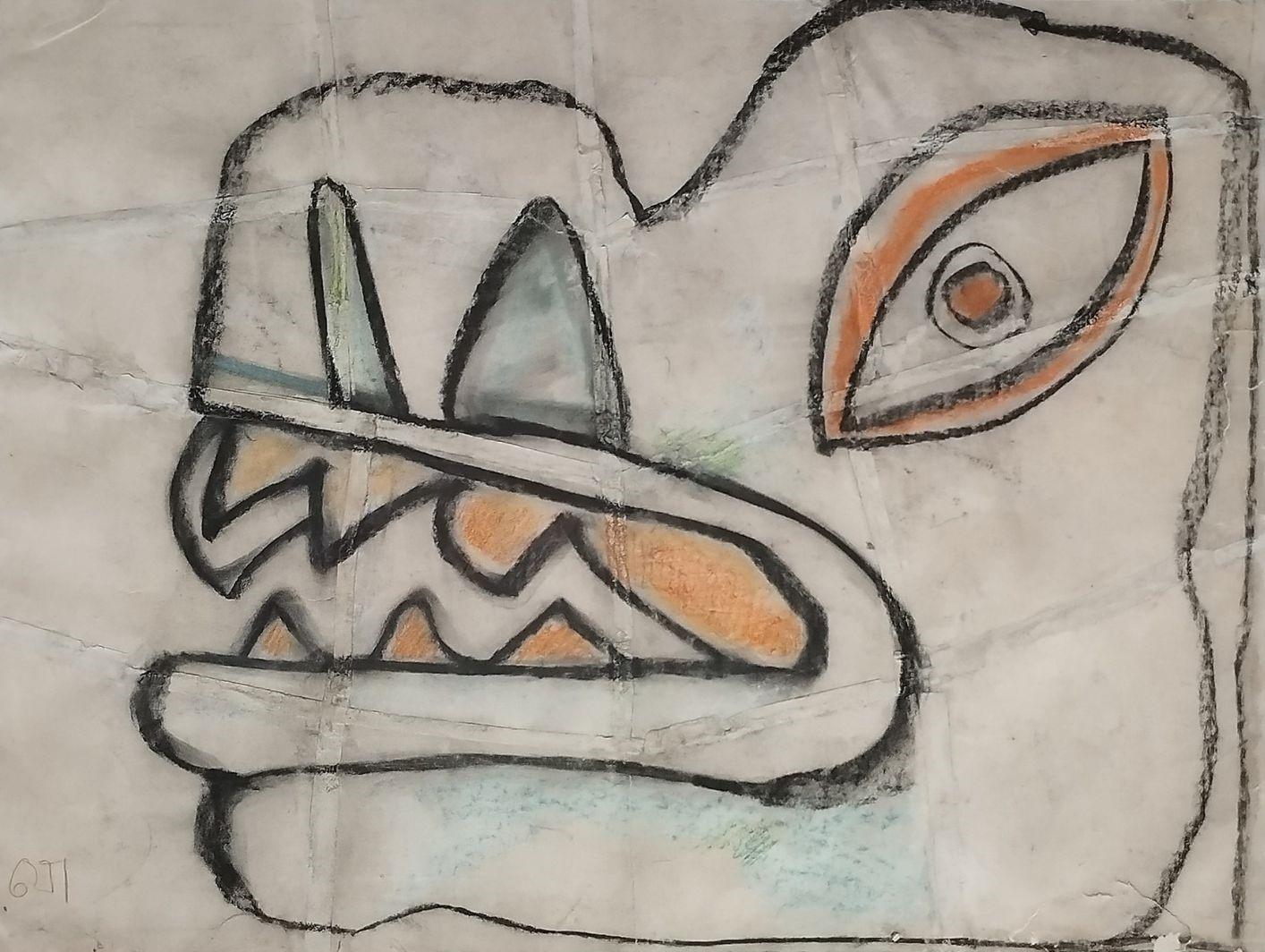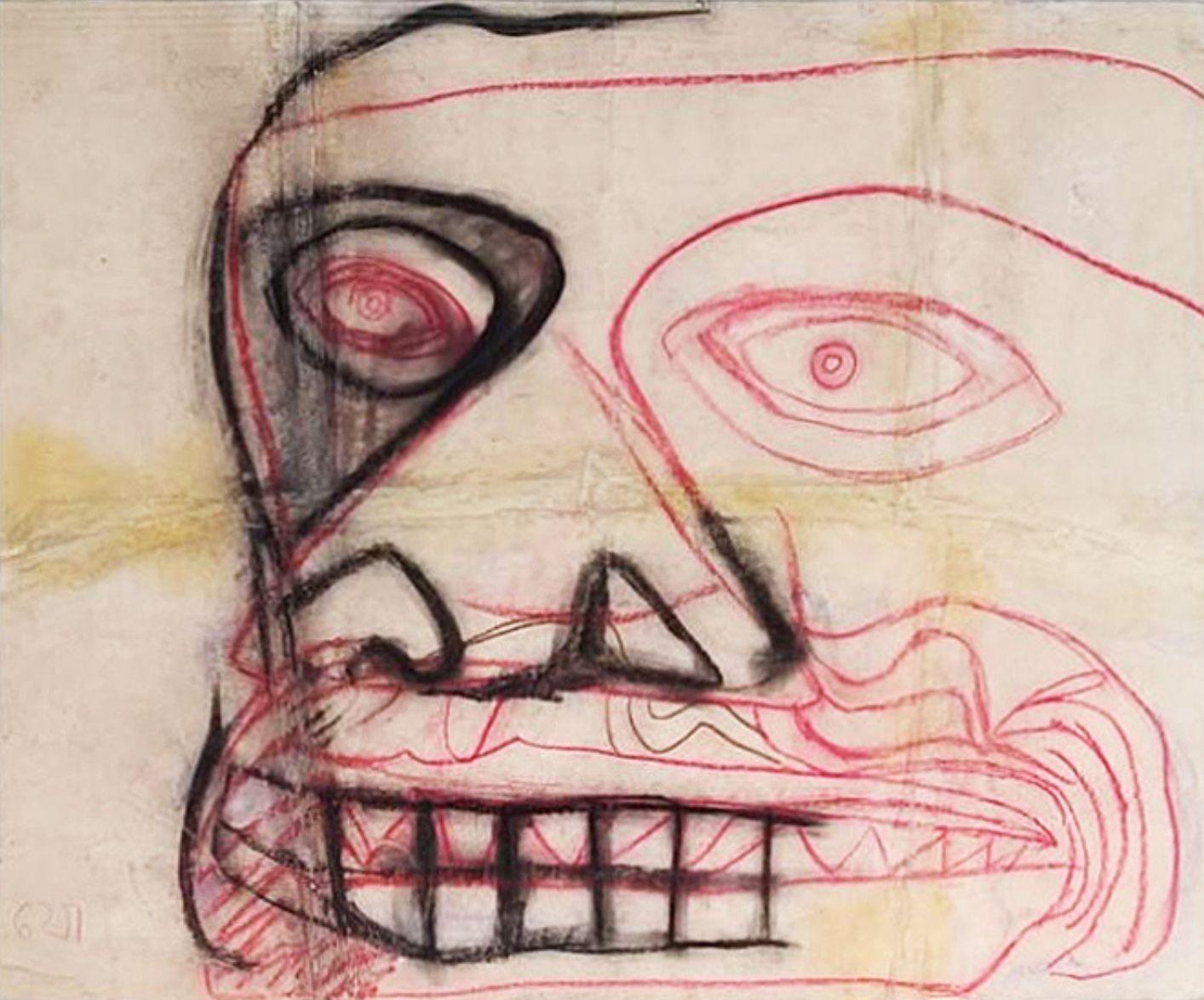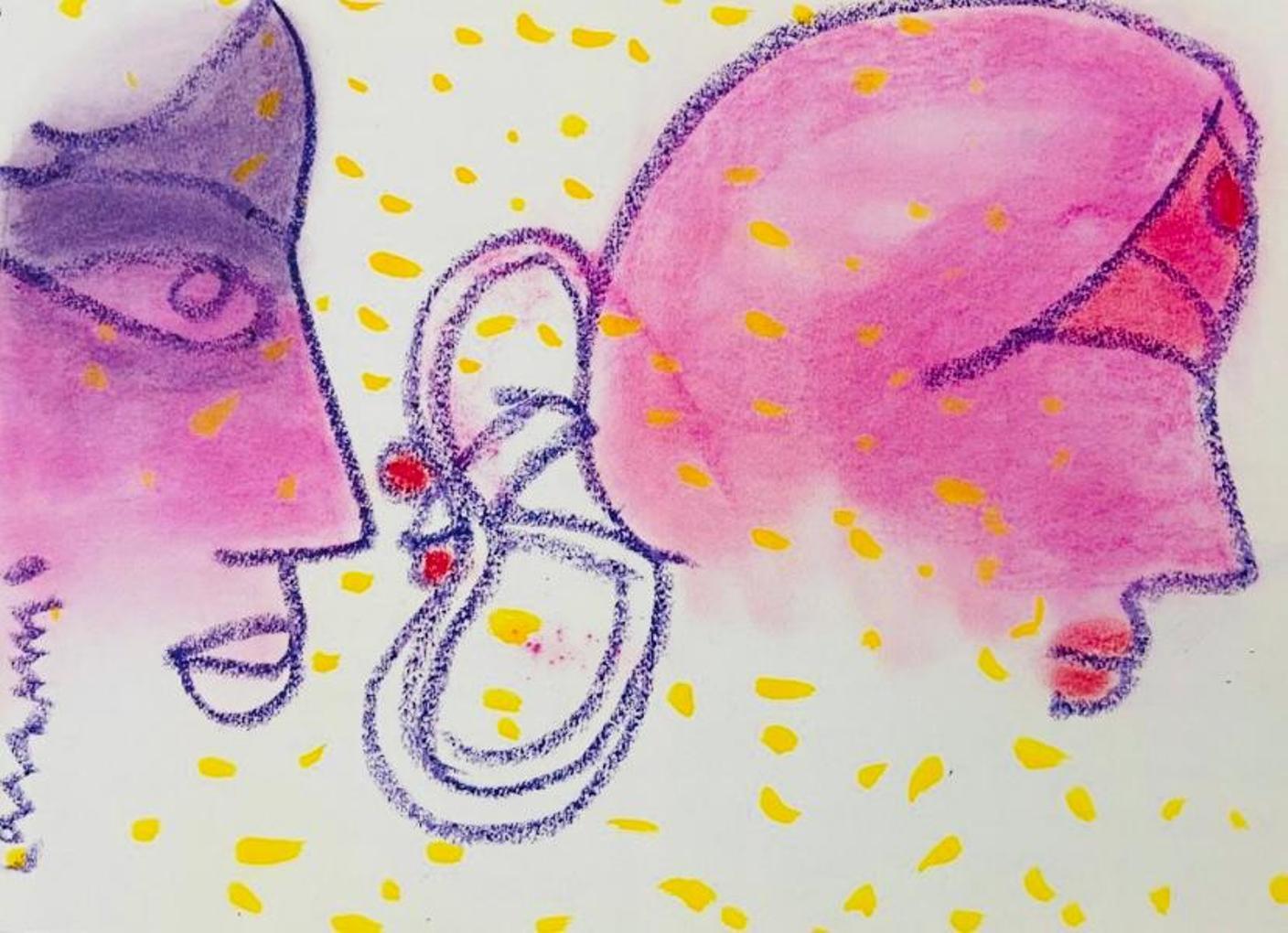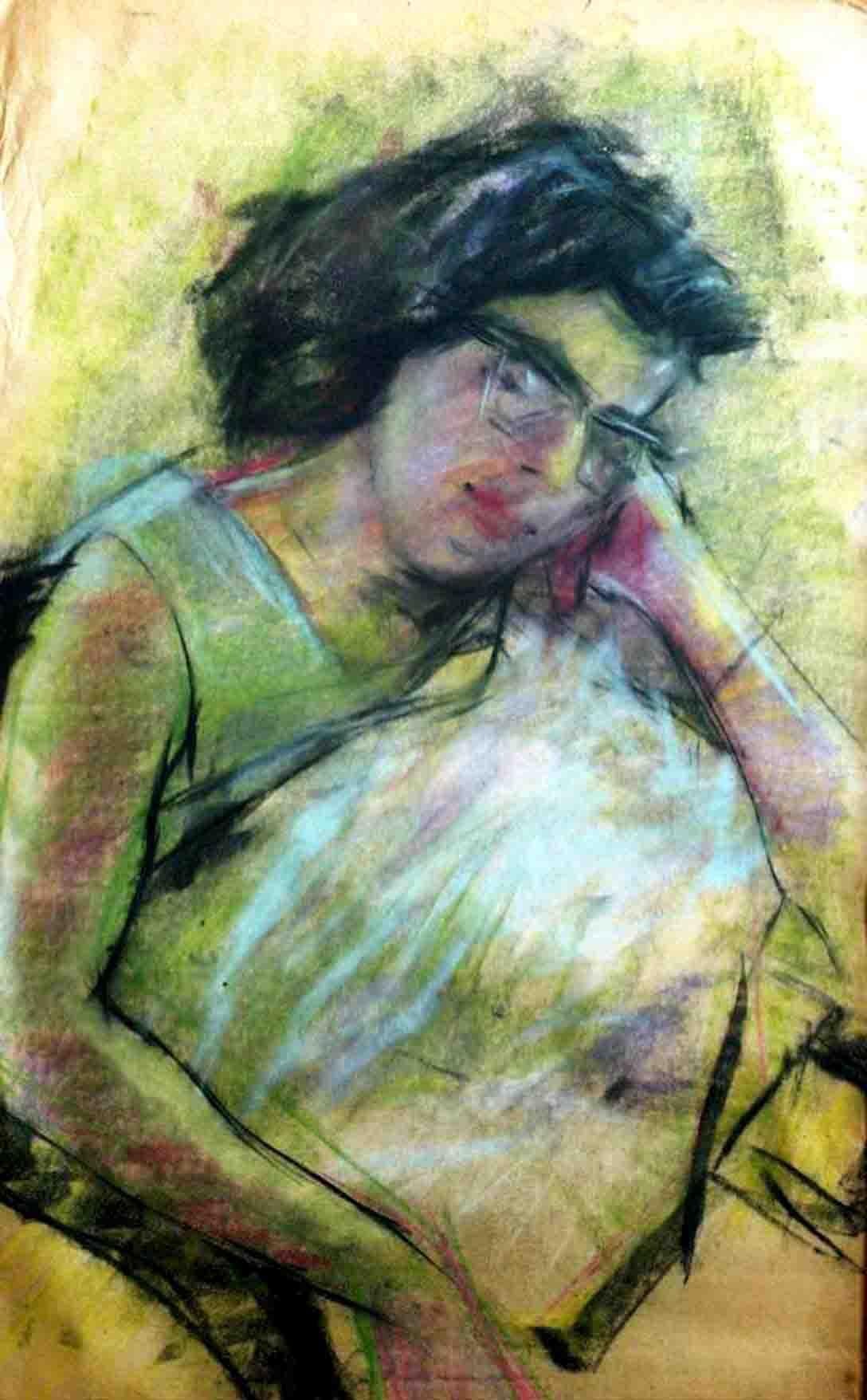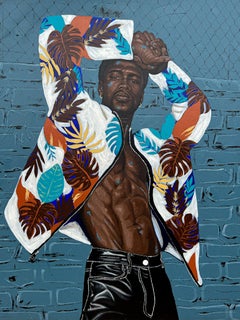Mexican Siesta Pastel Drawing Ecole D'Paris, WPA, Bezalel Artist
View Similar Items
Want more images or videos?
Request additional images or videos from the seller
1 of 8
Jacques (Jakub) ZuckerMexican Siesta Pastel Drawing Ecole D'Paris, WPA, Bezalel Artistc.1930s
c.1930s
About the Item
- Creator:Jacques (Jakub) Zucker (1900-1981, American)
- Creation Year:c.1930s
- Dimensions:Height: 10 in (25.4 cm)Width: 13 in (33.02 cm)
- Medium:
- Movement & Style:
- Period:
- Condition:minor rip / bending on top left edge.
- Gallery Location:Surfside, FL
- Reference Number:1stDibs: LU382638492
About the Seller
4.9
Platinum Seller
These expertly vetted sellers are 1stDibs' most experienced sellers and are rated highest by our customers.
Established in 1995
1stDibs seller since 2014
1,541 sales on 1stDibs
Typical response time: 1 hour
More From This SellerView All
- Pastel Painting Woman in Interior Polish Ecole D'Paris, WPA, Bezalel ArtistBy Jacques (Jakub) ZuckerLocated in Surfside, FLJacques Zucker was born in 1900 in Radom, Poland. He was a notably famous Jewish American artist mostly known for his expressionist figure paintings. In his young years he traveled t...Category
20th Century Modern Figurative Paintings
MaterialsPastel
- Woman Artist in Studio Pastel Drawing Polish Ecole D'Paris, WPA, Bezalel ArtistBy Jacques (Jakub) ZuckerLocated in Surfside, FLJacques Zucker was born in 1900 in Radom, Poland. He was a notably famous Jewish American artist mostly known for his expressionist figure paintings. In his young years he traveled t...Category
20th Century Modern Figurative Paintings
MaterialsPastel
- Mexican Siesta Pastel Drawing Ecole D'Paris, WPA, Bezalel ArtistBy Jacques (Jakub) ZuckerLocated in Surfside, FLJacques Zucker was born in 1900 in Radom, Poland. He was a notably famous Jewish American artist mostly known for his expressionist figure paintings. In his young years he traveled t...Category
20th Century Modern Figurative Paintings
MaterialsPastel
- Portrait Drawing Bearded Man Ecole D'Paris, WPA, Bezalel ArtistBy Jacques (Jakub) ZuckerLocated in Surfside, FLJacques Zucker was born in 1900 in Radom, Poland. He was a notably famous Jewish American artist mostly known for his expressionist figure paintings. In his young years he traveled t...Category
20th Century Modern Figurative Paintings
MaterialsPastel
- Rare Modernist Hungarian Rabbi Pastel Drawing Gouache Painting Judaica Art DecoBy Hugó ScheiberLocated in Surfside, FLRabbi in the synagogue at prayer wearing tallit and tefillin. Hugó Scheiber (born 29 September 1873 in Budapest – died there 7 March 1950) was a Hungarian modernist painter. Hugo Scheiber was brought from Budapest to Vienna at the age of eight where his father worked as a sign painter for the Prater Theater. At fifteen, he returned with his family to Budapest and began working during the day to help support them and attending painting classes at the School of Design in the evening, where Henrik Papp was one of his teachers. He completed his studies in 1900. His work was at first in a post-Impressionistic style but from 1910 onward showed his increasing interest in German Expressionism and Futurism. This made it of little interest to the conservative Hungarian art establishment. However, in 1915 he met the great Italian avant-gardist Filippo Tommaso Marinetti and the two painters became close friends. Marinetti invited him to join the Futurist Movement. The uniquely modernist style that he developed was, however, closer to German Expressionism than to Futurism and eventually drifted toward an international art deco manner similar to Erté's. In 1919, he and his friend Béla Kádar held an exhibition at the Hevesy Salon in Vienna. It was a great success and at last caused the Budapest Art Museum to acquire some of Scheiber's drawings. Encouraged, Scheiber came back to live in Vienna in 1920. A turning point in Scheiber's career came a year later, when Herwarth Walden, founder of Germany's leading avant-garde periodical, Der Sturm, and of the Sturm Gallery in Berlin, became interested in Scheiber's work. Scheiber moved to Berlin in 1922, and his paintings soon appeared regularly in Walden's magazine and elsewhere. Exhibitions of his work followed in London, Rome, La Paz, and New York. Scheiber's move to Germany coincided with a significant exodus of Hungarian artists to Berlin, including Laszlo Moholy-Nagy and Sandor Bortnyik. There had been a major split in ideology among the Hungarian avant-garde. The Constructivist and leader of the Hungarian avantgarde, Lajos Kassák (painted by Hugó Scheiber in 1930) believed that art should relate to all the needs of contemporary humankind. Thus he refused to compromise the purity of his style to reflect the demands of either the ruling class or socialists and communists. The other camp believed that an artist should be a figurehead for social and political change. The fall out and factions that resulted from this politicisation resulted in most of the Hungarian avant gardists leaving Vienna for Berlin. Hungarian émigrés made up one of the largest minority groups in the German capital and the influx of their painters had a significant effect on Hungarian and international art. Another turning point of Scheiber's career came in 1926, with the New York exhibition of the Société Anonyme, organized by Katherine Dreier. Scheiber and other important avant garde artists from more than twenty-three countries were represented. In 1933, Scheiber was invited by Marinetti to participate in the great meeting of the Futurists held in Rome in late April 1933, Mostra Nazionale d’Arte Futurista where he was received with great enthusiasm. Gradually, the Hungarian artists began to return home, particularly with the rise of Nazism in Germany. Kádar went back from Berlin in about 1932 and Scheiber followed in 1934. He was then at the peak of his powers and had a special flair in depicting café and cabaret life in vivid colors, sturdily abstracted forms and spontaneous brush strokes. Scheiber depicted cosmopolitan modern life using stylized shapes and expressive colors. His preferred subjects were cabaret and street scenes, jazz musicians, flappers, and a series of self-portraits (usually with a cigar). his principal media being gouache and oil. He was a member of the prestigious New Society of Artists (KUT—Képzőművészek Új Társasága)and seems to have weathered Hungary's post–World War II transition to state-communism without difficulty. He continued to be well regarded, eventually even receiving the posthumous honor of having one of his images used for a Russian Soviet postage stamp (see image above). Hugó Scheiber died in Budapest in 1950. Paintings by Hugó Scheiber form part of permanent museum collections in Budapest (Hungarian National Museum), Pecs (Jannus Pannonius Museum), Vienna, New York, Bern and elsewhere. His work has also been shown in many important exhibitions, including: "The Nell Walden Collection," Kunsthaus Zürich (1945) "Collection of the Société Anonyme," Yale University Art Gallery, New Haven, Connecticut (1950) "Hugó Scheiber: A Commemorative Exhibition," Hungarian National Museum, Budapest (1964) "Ungarische Avantgarde," Galleria del Levante, Munich (1971) "Paris-Berlin 1900-1930," Centre Georges Pompidou, Paris (1978) "L’Art en Hongrie, 1905-1920," Musée d’Art et l’Industrie, Saint-Etienne (1980) "Ungarische Avantgarde in der Weimarer Republik," Marburg (1986) "Modernizmus," Eresz & Maklary Gallery, Budapest (2006) "Hugó Scheiber & Béla Kádár," Galerie le Minotaure, Paris and Tel Aviv (2007) Hugó Scheiber's paintings continue to be regularly sold at Sotheby's, Christie's, Gillen's Arts (London), Papillon Gallery (Los Angeles) and other auction houses. He was included in the exhibition The Art Of Modern Hungary 1931 and other exhibitions along with Vilmos Novak Aba, Count Julius Batthyany, Pal Bor, Bela Buky, Denes Csanky, Istvan Csok, Bela Czobel, Peter Di Gabor, Bela Ivanyi Grunwald, Baron Ferenc Hatvany, Lipot Herman, Odon Marffy, C. Pal Molnar...Category
Early 20th Century Modern Figurative Paintings
MaterialsPaper, Charcoal, Pastel, Watercolor, Gouache
- Polish Expressionist Profile Portrait Drawing TWO CHILDRENBy Josef PresserLocated in Surfside, FLGenre: Other Subject: Figures Medium: Other, Gouache Surface: Paper Country: United States sight size 17 X 13 inches Emigrating to Boston in 1913 from Poland with his Russian-Jewis...Category
Mid-20th Century Expressionist Figurative Paintings
MaterialsPaper, Pastel, Gouache
You May Also Like
- Yoga Feelings On My Vintage JacketLocated in Ibadan, OyoAlagbe's artwork draws attention to the man's jacket, which showcases his bare chest. The jacket, reminiscent of a vintage style, represents the layers we often wear to shield ourselves from the world. By revealing his bare chest, the man symbolizes a willingness to be vulnerable and open to self-exploration. The jacket becomes a canvas for introspection, encouraging viewers to reflect on their own inner journeys toward peace and self-discovery. The quote by Geshe Kelsang Gyatso, "We all wish for world peace, but world peace will never be achieved unless we first establish peace within our own minds," resonates deeply with Alagbe's artwork. It highlights the idea that true peace cannot be attained externally unless we find serenity within ourselves. The artwork invites viewers to examine their own inner landscape and cultivate a sense of harmony, balance, and compassion toward themselves and others. Embedded within the artwork is another profound quote, this time from The Bhagavad Gita...Category
21st Century and Contemporary Modern Figurative Paintings
MaterialsAcrylic, Canvas, Pastel, Ink
- The Artists ModelBy Hans BurkhardtLocated in West Hollywood, CAPresenting a just discovered original pastel by American artist Hans Burkhardt. The Artists Model, is an original pastel on paper, signed, dated 1966, good original condition, with ...Category
1960s Modern Figurative Paintings
MaterialsPastel
- Face of a Young Man, Dry Pastel on Paper by Artist Jogen Chowdhury "In StockBy Jogen ChowdhuryLocated in Kolkata, West BengalJogen Chowdhury Face of a Young Man, Dry Pastel on Paper 7 x 9.25 inches , 2022 (unframed size ) The framed size of the work is 17 x 20 ( approx. ) The work will be shipped inclusive of framing. Signed in Bengali Style : He has immense contribution in inspiring young artists of India. Jogen Chowdhury had developed his individual style after his return from Paris. His most famous paintings are in ink, watercolor and pastel. He has painted in oil medium as well. In Chowdhury’s more recent works the sensory experiences of cloth, bolsters, sofas and the human body are cross-projected to produce an uncanny world of tran-substantiated tumescence and flaccidness. Jogen Chowdhury has been widely acknowledged to be, the master of the unbroken line. Like Léger, Chowdhury has been stirred by the linear Kalighat pat tradition, but his lines are emotive and used to express and suggest the character of a person. This is done by, distorting the form without breaking the line and in the world of young, contemporary art; distortion has been Jogen Chowdhury’s most significant impact. Perhaps, because of this, a common observation of his work is that his “people” are caricatures. The person feels familiar to the viewer but it is far more individualised – the face is imaginary but the psyche or characteristics are real. The power and beauty of his technique and line is this play between the known and unknown. In Jogen Chowdhury’s work, the figure is always in the foreground, it is primary, it conveys everything. He uses colour to give volume to his figures and the fluidity of his lines bring a sensual aspect to his forms. About the Artist and his work : Born : Born 1939 in Daharpara Village, Faridpur, Bangladesh. Jogen Chowdhury is an eminent Indian painter and considered an important painter of 21st century India. Family Background : His father Pramatnath Chowdhury was a Brahmin zamindar. Both his parents took interest in art, Jogen Chowdhury’s father Pramatnath Chowdhury painted several mythological scenes from the village theatres and also sculpted various Hindu icons. Whereas his mother was an expert in Alpana drawings. 1939-47 Jogen Chowdhury lived in a village atmosphere. And after partition in 1948, the whole family shifted. Till 1951 the whole family stayed at the police department quarter of his uncle, where on the walls Jogen Chowdhury painted his first painting, 1962 Jogen Chowdhury was employed as Designer in the Handloom Board. Education : 1955-60: Studied at the Government College of Art and Crafts, Kolkata. 1965 : He went to paris to study in Ecole des Beaux Arts, in William Hayter’s Atelier 17. Professional Experience : 1968-72 : He worked as an Art-Designer, Madras Handloom Board, Madras. 1970 : A collection of his poems were published, titled ‘Hridoy Train Beje Othey’. 1987 : Joined Kala Bhavan , Santiniketan as a professor of painting. Selected Exhibitions : 1972, 1975 & 1978 respectively : I, III, IV Triennales at New Delhi. 1979: The Sao Paolo Biennale. 1980: The exhibitions at the Fukuoka Museum, Japan. 1982: The Royal Academy, London. 1982: The Hirschhorn Museum, Washington D.C. 1986: The II Havana Biennale. 1989: ‘Festival of India’, in Geneva. 2002: Saffron art...Category
2010s Modern Mixed Media
MaterialsPaper, Pastel, Mixed Media
- Untitled, Figurative, Ink, Brush, Dry Pastel on Paper Jogen Chowdhury "In Stock"By Jogen ChowdhuryLocated in Kolkata, West BengalJogen Chowdhury - Untitled, 14 x 11 inches ( Unframed Size ) Ink with Brush & Dry Pastel on Paper, 2014 Style : He has immense contribution in inspiring young artists of India. Jogen Chowdhury had developed his individual style after his return from Paris. Jogen Chowdhury has been widely acknowledged to be, the master of the unbroken line. Like Léger, Chowdhury has been stirred by the linear Kalighat pat tradition, but his lines are emotive and used to express and suggest the character of a person. This is done by, distorting the form without breaking the line and in the world of young, contemporary art; distortion has been Jogen Chowdhury’s most significant impact. Perhaps, because of this, a common observation of his work is that his “people” are caricatures. The person feels familiar to the viewer but it is far more individualised - the face is imaginary but the psyche or characteristics are real. The power and beauty of his technique and line is this play between the known and unknown. In Jogen Chowdhury’s work, the figure is always in the foreground, it is primary, it conveys everything. He uses colour to give volume to his figures and the fluidity of his lines bring a sensual aspect to his forms. About the Artist & his works : Born : 1939 in Daharpara Village, Faridpur, Bangladesh. Jogen Chowdhury is an eminent Indian painter and considered an important painter of 21st century India. Family Background: His father Pramatnath Chowdhury was a Brahmin zamindar. Both his parents took interest in art, Jogen Chowdhury's father Pramatnath Chowdhury painted several mythological scenes from the village theatres and also sculpted various Hindu icons. Whereas his mother was an expert in Alpana drawings. 1939-47 Jogen Chowdhury lived in a village atmosphere. And after partition in 1948, the whole family shifted. Till 1951 the whole family stayed at the police department quarter of his uncle, where on the walls Jogen Chowdhury painted his first painting, 1962 Jogen Chowdhury was employed as Designer in the Handloom Board. Education: 1955-60: Studied at the Government College of Art and Crafts, Kolkata. 1965 : He went to paris to study in Ecole des Beaux Arts, in William Hayter’s Atelier 17. Professional Experience: 1968-72 : He worked as an Art-Designer, Madras Handloom Board, Madras. 1970 : A collection of his poems were published, titled 'Hridoy Train Beje Othey'. 1987 : Joined Kala Bhavan , Santiniketan as a professor of painting. Selected Exhibitions: 1972, 1975 & 1978 respectively : I, III, IV Triennales at New Delhi . 1979: The Sao Paolo Biennale . 1980: The exhibitions at the Fukuoka Museum, Japan. 1982: The Royal Academy, London. 1982: The Hirschhorn Museum, Washington D.C. 1986: The II Havana Biennale 1989: 'Festival of India', in Geneva 2002: Saffron art...Category
2010s Modern Figurative Paintings
MaterialsPaper, Pastel, Ink, Mixed Media
- With Smiling Teeth, Dry Pastel on Paper by Artist Jogen Chowdhury "In StockBy Jogen ChowdhuryLocated in Kolkata, West BengalJogen Chowdhury With Smiling Teeth, Dry Pastel on Paper 7 x 9.25 inches , 2022 (unframed Size ) The framed size of the work is approx . 17 x 20 inches The work will be shipped inclusive of framing. Signed in Bengali Style : He has immense contribution in inspiring young artists of India. Jogen Chowdhury had developed his individual style after his return from Paris. His most famous paintings are in ink, watercolor and pastel. He has painted in oil medium as well. In Chowdhury’s more recent works the sensory experiences of cloth, bolsters, sofas and the human body are cross-projected to produce an uncanny world of tran-substantiated tumescence and flaccidness. Jogen Chowdhury has been widely acknowledged to be, the master of the unbroken line. Like Léger, Chowdhury has been stirred by the linear Kalighat pat tradition, but his lines are emotive and used to express and suggest the character of a person. This is done by, distorting the form without breaking the line and in the world of young, contemporary art; distortion has been Jogen Chowdhury’s most significant impact. Perhaps, because of this, a common observation of his work is that his “people” are caricatures. The person feels familiar to the viewer but it is far more individualised – the face is imaginary but the psyche or characteristics are real. The power and beauty of his technique and line is this play between the known and unknown. In Jogen Chowdhury’s work, the figure is always in the foreground, it is primary, it conveys everything. He uses colour to give volume to his figures and the fluidity of his lines bring a sensual aspect to his forms. About the Artist and his work : Born : Born 1939 in Daharpara Village, Faridpur, Bangladesh. Jogen Chowdhury is an eminent Indian painter and considered an important painter of 21st century India. Family Background : His father Pramatnath Chowdhury was a Brahmin zamindar. Both his parents took interest in art, Jogen Chowdhury’s father Pramatnath Chowdhury painted several mythological scenes from the village theatres and also sculpted various Hindu icons. Whereas his mother was an expert in Alpana drawings. 1939-47 Jogen Chowdhury lived in a village atmosphere. And after partition in 1948, the whole family shifted. Till 1951 the whole family stayed at the police department quarter of his uncle, where on the walls Jogen Chowdhury painted his first painting, 1962 Jogen Chowdhury was employed as Designer in the Handloom Board. Education : 1955-60: Studied at the Government College of Art and Crafts, Kolkata. 1965 : He went to paris to study in Ecole des Beaux Arts, in William Hayter’s Atelier 17. Professional Experience : 1968-72 : He worked as an Art-Designer, Madras Handloom Board, Madras. 1970 : A collection of his poems were published, titled ‘Hridoy Train Beje Othey’. 1987 : Joined Kala Bhavan , Santiniketan as a professor of painting. Selected Exhibitions : 1972, 1975 & 1978 respectively : I, III, IV Triennales at New Delhi. 1979: The Sao Paolo Biennale. 1980: The exhibitions at the Fukuoka Museum, Japan. 1982: The Royal Academy, London. 1982: The Hirschhorn Museum, Washington D.C. 1986: The II Havana Biennale. 1989: ‘Festival of India’, in Geneva. 2002: Saffron art...Category
2010s Modern Figurative Drawings and Watercolors
MaterialsPaper, Pastel, Mixed Media
- Untitled, Figurative, Ink & Pastel on Paper by Artist Jogen Chowdhury "In StockBy Jogen ChowdhuryLocated in Kolkata, West BengalJogen Chowdhury Untitled, Figurative, Ink & Pastel on Paper 5 x 6.5 inches , 2003 Signed in Bengali Style : He has immense contribution in inspiring young artists of India. Jogen Chowdhury had developed his individual style after his return from Paris. His most famous paintings are in ink, watercolor and pastel. He has painted in oil medium as well. In Chowdhury’s more recent works the sensory experiences of cloth, bolsters, sofas and the human body are cross-projected to produce an uncanny world of tran-substantiated tumescence and flaccidness. Jogen Chowdhury has been widely acknowledged to be, the master of the unbroken line. Like Léger, Chowdhury has been stirred by the linear Kalighat pat tradition, but his lines are emotive and used to express and suggest the character of a person. This is done by, distorting the form without breaking the line and in the world of young, contemporary art; distortion has been Jogen Chowdhury’s most significant impact. Perhaps, because of this, a common observation of his work is that his “people” are caricatures. The person feels familiar to the viewer but it is far more individualised – the face is imaginary but the psyche or characteristics are real. The power and beauty of his technique and line is this play between the known and unknown. In Jogen Chowdhury’s work, the figure is always in the foreground, it is primary, it conveys everything. He uses colour to give volume to his figures and the fluidity of his lines bring a sensual aspect to his forms. About the Artist and his work : Born : Born 1939 in Daharpara Village, Faridpur, Bangladesh. Jogen Chowdhury is an eminent Indian painter and considered an important painter of 21st century India. Family Background : His father Pramatnath Chowdhury was a Brahmin zamindar. Both his parents took interest in art, Jogen Chowdhury’s father Pramatnath Chowdhury painted several mythological scenes from the village theatres and also sculpted various Hindu icons. Whereas his mother was an expert in Alpana drawings. 1939-47 Jogen Chowdhury lived in a village atmosphere. And after partition in 1948, the whole family shifted. Till 1951 the whole family stayed at the police department quarter of his uncle, where on the walls Jogen Chowdhury painted his first painting, 1962 Jogen Chowdhury was employed as Designer in the Handloom Board. Education : 1955-60: Studied at the Government College of Art and Crafts, Kolkata. 1965 : He went to paris to study in Ecole des Beaux Arts, in William Hayter’s Atelier 17. Professional Experience : 1968-72 : He worked as an Art-Designer, Madras Handloom Board, Madras. 1970 : A collection of his poems were published, titled ‘Hridoy Train Beje Othey’. 1987 : Joined Kala Bhavan , Santiniketan as a professor of painting. Selected Exhibitions : 1972, 1975 & 1978 respectively : I, III, IV Triennales at New Delhi. 1979: The Sao Paolo Biennale. 1980: The exhibitions at the Fukuoka Museum, Japan. 1982: The Royal Academy, London. 1982: The Hirschhorn Museum, Washington D.C. 1986: The II Havana Biennale. 1989: ‘Festival of India’, in Geneva. 2002: Saffron...Category
Early 2000s Modern Mixed Media
MaterialsPaper, Pastel, Mixed Media, Ink
